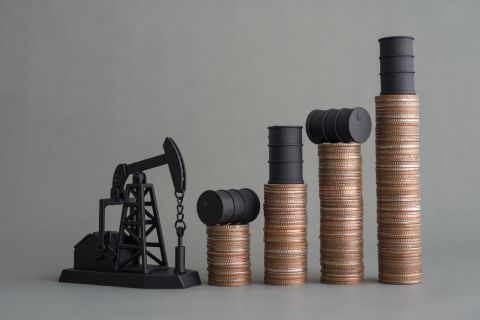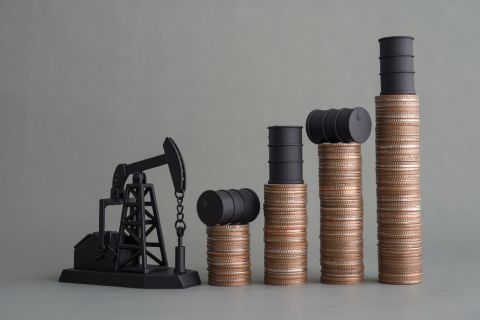CARACAS, Venezuela—Venezuela continues to flare over half its natural gas production, mainly due to infrastructure limitations, and burns off more than 2.2 Bcf/d—greater than the output from Houston-based Freeport LNG’s three-train, 15-million tonnes per annum export facility.
The OPEC country continues to flare, vent and lose gas production volumes through leakage. The lost volumes are due to a combination of historically low crude oil production and low gas injections to maintain reservoir pressures, coupled with a lack of infrastructure to capture and monetize those gas volumes, experts from consulting firm Gas Energy Latin America, Antero Alvarado, Luis Marin and Aidemiro Valera, said Jul. 21 during a company presentation in Caracas.
Gas Energy expects Venezuela’s gas production to average around 4 Bcf/d in 2023, while volumes estimated to be flared, vented or lost through leakage are expected to amount to 53% of total production, the experts concurred during the event co-hosted by the Venezuela-German Chamber of Commerce and Industry (CAVENAL) and the Friedrich Ebert Stiftung Venezuela Foundation’s Latin American Institute of Social Investigations.
This compares to Venezuelan gas production of 4.4 Bcf/d in 2022 (2.6 Bcf/d or 59% flared, vented and lost), 4.4 Bcf/d in 2021 (65%), 4.5 Bcf/d in 2020 (68%) and 6.9 Bcf/d in 2010 (29%), according to Gas Energy. While Venezuela has gained a reputation over the years as an oil producer, the country produces a lot of associated gas.
Historically in better economic times, the country and its state-owned company Petróleos de Venezuela (PDVSA) would reinject significant gas volumes to maintain reservoir pressures. However, those better times are behind the country and company due to years of oil rents mismanagement, widespread corruption and a lack of foreign direct investment from international oil companies.
Today, amid an epic collapse in oil production at just below the 800,000 bbl/d mark and down from an average of around 3 MMbbl/d over much of the last two decades, reinjections have become a thing of the past, especially in Venezuela’s Maturin state in the east of the country and in areas such as Furrial and Punta de Mata.
RELATED
Chart Talk: Venezuela’s Massive Production Meltdown
In 2022 in eastern Venezuela alone, an average 1.5 Bcf/d was either flared, vented or lost, which emitted around 2.5 MMton of CO2 per month into the atmosphere, according to Gas Energy estimates. The flaring, in addition to generating direct environmental and health problems, also generates constant loud noises in the surrounding communities.
Venezuelan flared gas as supply for world
Venezuela is home to the world’s largest oil reserves at 304 Bbbl and the world's seventh largest gas reserves at 221 Tcf, according to BP’s Statistical Review of Energy. The country’s high reserves coupled with low production means it has enough oil to last easily over 500 years and enough gas for around 334 years.
Venezuela’s wasted gas volumes could be captured and used to supply the domestic market as well as for export to international markets likes Europe, Asia or to neighboring Trinidad and Tobago, the Gas Energy experts said.
Moscow’s invasion of Ukraine last year boosted demand in Europe for LNG to replace lost Russian piped-gas volumes. Bulge-bracket LNG exporters ranging from Australia to the U.S. to Qatar continue to dominate the market, and the latter two plan to bring to market significant new volumes over the short-term. But with expected LNG demand growth expected to outstrip supply, potential new suppliers are scrambling to seek financing to build out liquefaction capacity.
RELATED
Q&A: Trinidad’s Energy Minister Young Talks Gas Production, Venezuela and Atlantic LNG
In the case of Trinidad, the Caribbean country is currently short of gas to feed its LNG, methanol and ammonia plants. Trinidad’s four-train 14.8 mtpa Atlantic LNG export facility continues to operate with three trains due to the severity of gas scarcity that continues to impact the small twin-island gas-dependent economy.
But getting those wasted Venezuelan gas volumes to markets far across the Atlantic or Pacific—or even next door—where it can be monetized remains the biggest headwind for potential clients, as well as for the Venezuelan government of Nicolas Maduro.
While investors’ hesitancy to make investments in Venezuela’s oil and gas sector will see the country strand massive reserves, their unwillingness to take a bet on infrastructure to capture flared gas will see the South American country continue to lose massive revenue potential from its remaining oil production.
Recommended Reading
What's Affecting Oil Prices This Week? (Sept. 23, 2024)
2024-09-23 - For the upcoming week, oil prices could get a boost from another storm forming in the Gulf of Mexico that could be a hurricane by the evening of Sept. 25 and possibly affect much of the eastern Gulf Coast.
What's Affecting Oil Prices This Week? (Nov. 18, 2024)
2024-11-18 - For the upcoming week, the price of Brent crude could test its support at $70 and if the price breaks below this level, the price of Brent could fall to $66.
What's Affecting Oil Prices This Week? (Nov. 4, 2024)
2024-11-04 - For the upcoming week, with the increased geopolitical risk and OPEC+’s delay in phasing out its production cut, Stratas Advisors expect that the price of Brent crude could test $77.
What's Affecting Oil Prices This Week? (Sept. 16, 2024)
2024-09-16 - With expectations for more favorable supply/demand fundamentals and improvement in the sentiment of oil traders, Stratas Advisors forecast higher oil prices with the price of Brent crude moving back above $80.
What's Affecting Oil Prices This Week? (Oct. 7, 2024)
2024-10-07 - Given last week’s price increase, Stratas Advisors estimates that the oil market is placing about a 10% probability that the conflict between Israel and Iran will result in a disruption to the flow of oil.
Comments
Add new comment
This conversation is moderated according to Hart Energy community rules. Please read the rules before joining the discussion. If you’re experiencing any technical problems, please contact our customer care team.






